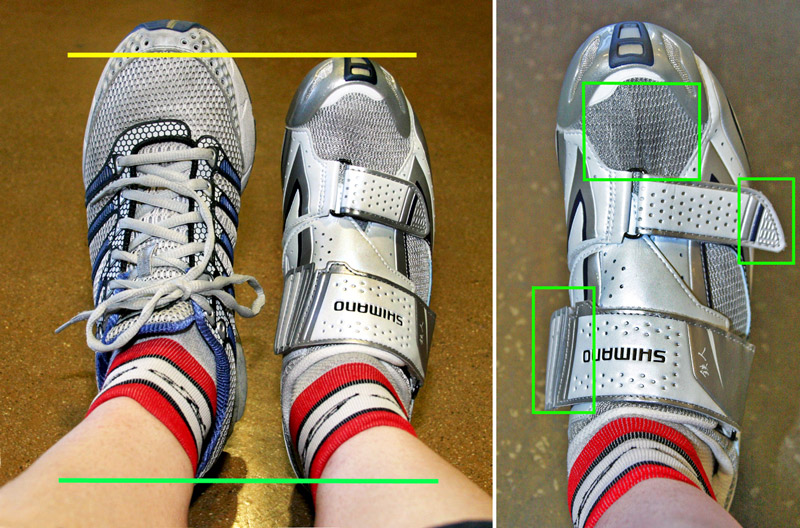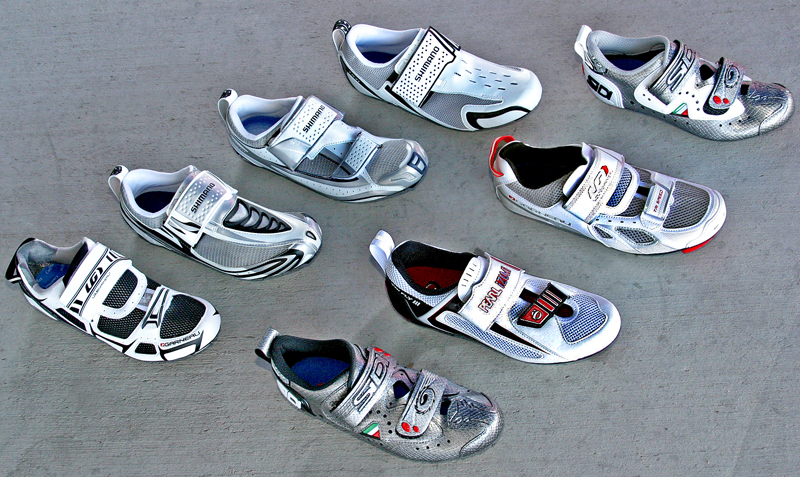 Subject: RE: Tri Bike Shoes Subject: RE: Tri Bike ShoesI just did a bunch of research on cycling and triathlon shoes, a topic I'm frequently researching since it's a moving target with new product introductions and model year changes. In a nutshell, I say make your selection by fit. The shoes need to fit snug. If you have movement in the shoe you'll develop hot spots, friction and numbness. These symptoms are frequently mistaken for the opposite issue or make people think the shoes are too small. 
The shoes on the left fit accurately. A running shoe is shown for comparison of overall size and volume. The shoe on the right is too large. The green boxes show visual cues that they do not fit precisely. The extra fabric in the toe area, the extra strap length both indicate the shoe is too large in volume. It may also be too large in length- but it also may not- if the shoe fits "boxy" or with room to move, then there will be the issues associated with the foot moving in the shoe. Remember- unlike running, street or hiking shoes your feet won't touch the ground in a cycling shoe, only be clipped to the pedals, so the surface area of contact between the sole of the shoe and the pedal is much smaller than the surface area of contact between your foot and the ground while standing. So- never stand up while trying on cycling shoes. The Italian shoe manufacturer, Sidi, recommends trying your shoes on late in the day in the .pdf file on their US website. Your feet will be at their largest due to normal inflammation. I agree with this. If you are buying tri specifc cycling shoes decide if your are going to ride without socks in events and try the shoes on like that in the store. 
|  No new posts
No new posts 2012-01-04 2:34 PM
2012-01-04 2:34 PM 2012-01-04 2:50 PM
2012-01-04 2:50 PM in reply to: #3971123
in reply to: #3971123 2012-01-04 3:37 PM
2012-01-04 3:37 PM in reply to: #3971123
in reply to: #3971123 2012-01-04 3:58 PM
2012-01-04 3:58 PM in reply to: #3971123
in reply to: #3971123 2012-01-04 4:29 PM
2012-01-04 4:29 PM in reply to: #3971123
in reply to: #3971123